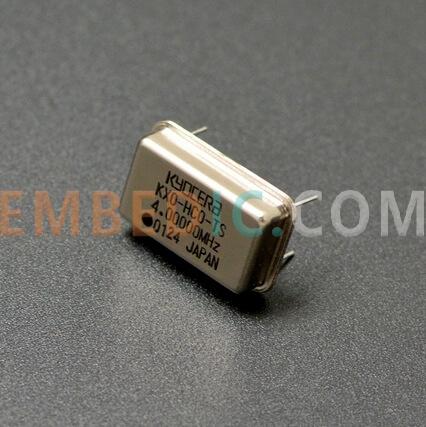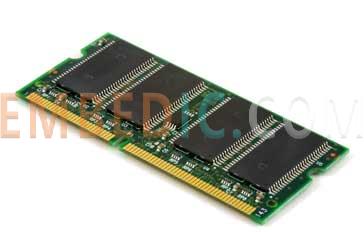Embedded design is a huge project, today we will talk about a few considerations in hardware circuit design, first, let's understand the embedded hardware architecture.
We know that the CPU is the soul of the system, all peripheral configuration is associated with it, which also highlights a feature of embedded design hardware can be cut. There are 6 tips that need attention about doing embedded hardware architecture and design, let’s move on.
The role of the power supply for the embedded system can be seen as the role of air to the human body, or even more important: people breathe air with oxygen, carbon dioxide and nitrogen, etc. but the content is stable, which is equivalent to the power supply system in a variety of clutter, we hope to get pure and stable in line with the requirements of the power supply, but due to a variety of factors constraints, just our dream. This to focus on two aspects.
a. Voltage
Embedded systems require various amounts of power supply such as the common 5v, 3.3v, 1.8v, etc. In order to minimize the ripple of the power supply, the use of LDO devices in embedded systems. If the use of DCDC is not only large, its ripple is also a big headache.
b. Current
The normal operation of the embedded system requires not only a stable and sufficient power supply, but also sufficient current, so in the selection of power supply devices need to consider the load, I designed to generally leave a 30% margin.
If it is a multilayer board, the power supply part in the layout of the time to power split, then you need to pay attention to the split path, try to place a certain amount of power supply together. If it is a double-sided board, the width of the alignment needs to be paid attention to, as wide as possible in the case of the board allows. Suitable decoupling capacitors as close as possible to the power supply pins.
The crystal oscillator amounts the heart of the embedded system, as well as its security is directly pertaining to its operating state as well as communication efficiency. Common oscillators include passive crystal oscillators and active crystal oscillators. First, determine the oscillation frequency, and secondly determine the type of crystal oscillator.

a. Passive crystal oscillator
The selection of its matching capacitor and matching resistor is generally based on the reference manual. In the design of single-chip microcomputer, plug-in crystal oscillators are often used with ceramic capacitors. In ARM, in order to reduce space and facilitate wiring, four-corner passive crystal oscillators are often used with chip capacitors. Although we are familiar with the matching circuit of the fixed crystal oscillator, in order to be foolproof, we still need to refer to the reference manual to determine the size of the capacitor and whether a matching resistor is required.
b. Active crystal oscillator
It has a better and more accurate clock signal, but in comparison, it is more expensive than a crystal oscillator, so this is also a cost that needs to be paid attention to in hardware circuit design.
When designing the circuit board, it is necessary to pay attention to the crystal oscillator traces as close to the chip as possible, and the key signals away from the clock traces. Add a grounding protection ring if conditions permit. If it is a multi-layer board, it is also necessary to keep the key signals away from the traces of the crystal oscillator.
In the embedded debugging stage, in the case of abundant pin resources, I usually reserve an I/O port to connect LEDs or speakers to pave the way for the next software writing. The I/O interface is properly controlled during the running process of the embedded system, so as to judge whether the system is running normally.
If the embedded system needs to run a larger operating system, not only the CPU needs to have an MMU, but the CPU also needs to be connected to SDRAM and NAND FLASH. If the CPU has SDRAM and NAND FLASH controllers, the use of address lines does not need to be considered too much in hardware design. If there is no associated controller, then you need to pay attention to the use of address lines.

This part is a key point in LAYOUT. The reason is to make the relevant signal lines equal in length to ensure equal signal delays, and route the differential signal lines of the clock and DQS. When wiring, various wiring techniques need to be used comprehensively, such as symmetrical distribution with CPU, daisy chain wiring, T-type wiring, which all need to be selected according to the number of memory. Generally speaking, the more the number, the more complicated the wiring, if know its key points, everything is easy to fix.
The most important thing for an embedded system is to control peripheral modules through various interfaces to achieve the purpose preset by the designer. Commonly used interfaces include serial port (which can be used to connect modules such as Bluetooth, wifi and 3G), USB interface, network interface, JTAG interface, audio and video interface, HDMI interface and so on. As these interfaces are connected with external modules, it is important to do a good job in electromagnetic compatibility design. In addition, pay attention to the use of differential lines when LAYOUT.
This feature is listed separately because it is optional. If an embedded system is only used as a connector to connect the peripheral device module, connect to the computer host through the relevant interface or directly hang on the network, then the screen is not needed. But if it is a consumer product that interacts frequently with users, it has to be nagged. Capacitive screens are the first choice for embedded screens.
In circuit design, attention should be paid to the layout of touch screen connection lines and display connection lines. In the process of wiring, keep it close to the main control CPU as short as possible. At the same time, pay attention to the differential line for pairing signals and the same length for RGB control signals. The spacing of numerous signal traces follows the 3W policy to stay clear of mutual disturbance. In the design of the screen, it is necessary to ensure the power and prevent interference to prevent the appearance of screen flicker and blurry screen.
Manufacturer: Texas Instruments
IC DSP FIX/FLOAT POINT 361NFBGA
Product Categories: DSP
Lifecycle:
RoHS:
Manufacturer: Texas Instruments
IC DSP FIX/FLOAT POINT 361NFBGA
Product Categories: DSP
Lifecycle:
RoHS:
Manufacturer: Texas Instruments
IC DGTL MEDIA SOC 337NFBGA
Product Categories: SOC
Lifecycle:
RoHS:
Manufacturer: Texas Instruments
IC DGTL MEDIA SOC 337NFBGA
Product Categories: SOC
Lifecycle:
RoHS:
Looking forward to your comment
Comment